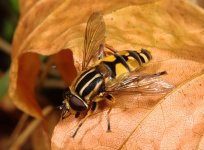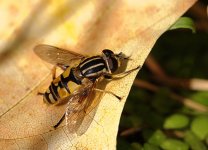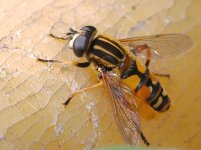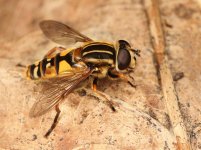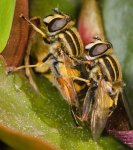Helophilus pendulus (Linnaeus, 1758)
Identification
Identification difficulty = 2. ![]()
![]() according to Ball & Morris, 20241
according to Ball & Morris, 20241
Biology
The larva is of the 'long-tailed' aquatic type and can be found in almost any enriched, wet or semi-liquid medium ranging from waterlogged, rotting vegetation at the edge of ponds and ditches to water-filled tree hollows, water-butts, wet compost heaps, slurry pits and even in cow-dung. Adults appear to be very mobile and can be found just about anywhere, frequently well away from water, and visiting a wide range of flowers from ground vegetation to tree-flowers. They are frequent visitors to garden flowers.
Flight period
The following plots show the number of unique records per week excluding those reported to be of immature stages.
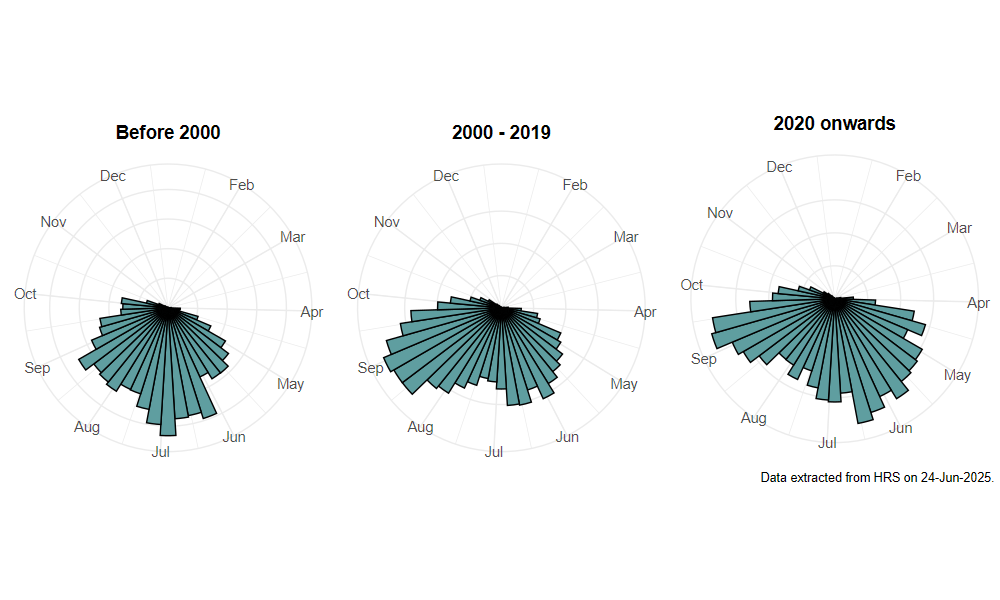
Distribution
One of the commonest and most widespread British hoverflies. Speight (2017)2 describes it as anthropogenic and as a 'species which has become ubiquitous in some regions of Europe because of its ability to use a wide range of standing water and sub-aqueous habitats'.

Trends
The following plots show the Frescalo TFactor vs year and a map of the rescaled frequency (all records) for the species.
-
Ball, S., & Morris, R. (2024). Hoverflies of Britain and Ireland. WILDGuides (3rd ed.). Oxford: Princeton University Press. ↩
-
Speight, M. (2017). Species accounts of European Syrphidae ( No. 97). yrph the Net, the database of European Syrphidae (Diptera) (p. 294). Dublin: Syrph the Net publications. Retrieved from https://pollinators.ie/wordpress/wp-content/uploads/2018/05/StN-2017-Species-Accounts.pdf ↩
